Home Workout Tips: Building Your Personalized Fitness Plan
In this article, we will explore essential home workout tips, offering practical strategies to create personalized, flexible, and effective fitness routines that empower you to achieve your fitness goals from the comfort of your home.
Creating a personalized home workout plan is an essential step toward achieving your fitness goals. Whether you’re a beginner just starting out or an experienced athlete looking to enhance your routine, tailoring your fitness journey to suit your specific needs makes all the difference. In this article, we’ll explore why having a home workout plan is crucial and how it can help you maintain consistency and progress effectively.
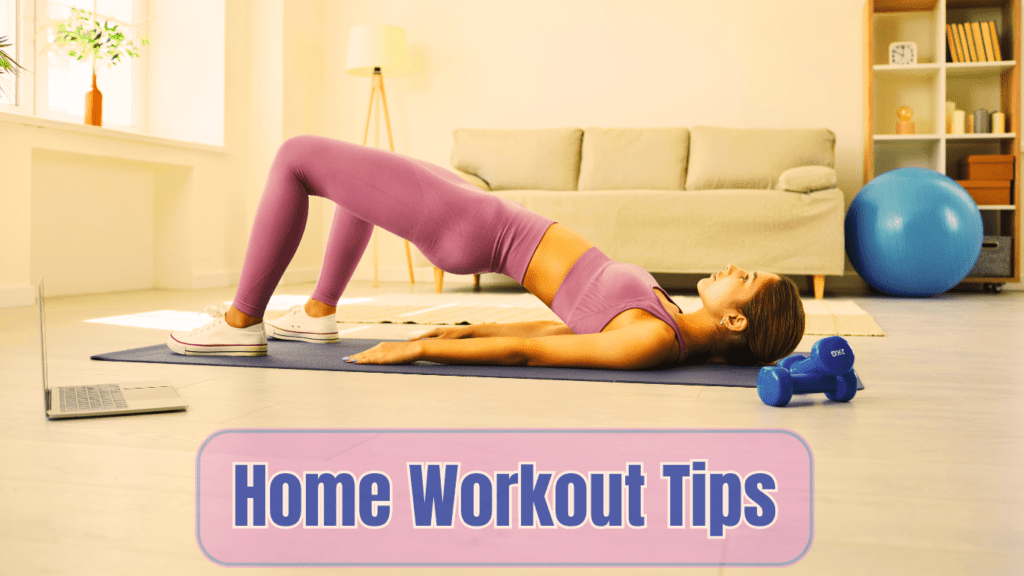
Flexibility to Suit Different Fitness Levels
One of the key advantages of a home workout plan is its ability to adapt to various fitness levels. Whether you’re a beginner, someone just stepping into a fitness routine, or an advanced fitness enthusiast, a well-structured plan ensures that you’re working within a level that challenges you but remains manageable.
- Beginner: For those just starting, a simple, low-impact routine that focuses on bodyweight exercises and basic movements is ideal.
- Intermediate: As you progress, your home workout plan can include more variety with added intensity and resistance training.
- Advanced: Experienced individuals can integrate complex movements, strength training, and high-intensity interval training (HIIT) into their home workouts.
By addressing different fitness levels, a personalized plan ensures that everyone can find something appropriate for their current ability and needs.
Benefits of Home Workouts: Convenience, Cost-effectiveness, and Adaptability
Home workouts come with a variety of benefits that make them a popular choice for fitness enthusiasts everywhere. One of the most appealing aspects is convenience. You no longer have to commute to a gym or wait for equipment; your personal gym is right in your home. Additionally, cost-effectiveness is a significant factor. No membership fees or expensive equipment are necessary—basic items like resistance bands, dumbbells, and your bodyweight will suffice.
Moreover, the adaptability of home workout tips ensures that as your fitness level improves, so does your plan. You can easily adjust your exercises, intensity, and duration without needing to follow the limitations of a gym setting.
Subscribe And Get Our Free E-Book:Unlocking The Power Of Nutrition-Supplements, Substitutes, and Superfoods!
Building Your Own Home Workout Plan
Creating a personalized home workout plan is a step-by-step process that focuses on tailoring exercises to match your goals, preferences, and available resources. Below are the key steps to help guide you through the process.
1. Define Your Fitness Goals
Before diving into a workout routine, it’s essential to set clear, achievable goals. Whether your objective is weight loss, muscle building, improving flexibility, or enhancing cardiovascular health, your home workout plan should reflect these priorities.
- Goal setting: Be specific about what you want to achieve. For instance, “I want to build endurance by increasing the number of push-ups I can do in a week” or “I aim to lose 10 pounds through consistent strength training.”
2. Assess Your Current Fitness Level
Understanding your starting point helps in developing a tailored home workout plan. By assessing where you currently stand, you can structure your exercises appropriately.
- Beginner: Focus on foundational exercises that strengthen muscles and improve endurance.
- Intermediate/Advanced: Introduce more intense workouts such as circuit training, yoga, or weightlifting.
3. Select the Right Exercises
Once you’ve established your fitness level, choosing the right exercises is crucial. A balanced home workout plan should include a mix of strength training, cardio, and flexibility exercises.
- Strength training: Incorporate movements like squats, lunges, and deadlifts.
- Cardio: Include activities such as running in place, jump rope, or high knees for improved cardiovascular health.
- Flexibility: Don’t forget to add stretching or yoga routines to enhance mobility and reduce injury risk.
4. Create a Schedule
Consistency is key to maintaining a successful home workout plan. Creating a flexible yet structured schedule ensures that you stay on track and don’t lose momentum.
- Frequency: Depending on your goals, aim for 3-5 workouts per week.
- Duration: Aim for sessions lasting between 30-60 minutes, depending on intensity.
5. Track Progress and Adjust
No plan is static—your body will adapt, and so should your home workout tips. Regularly tracking your progress allows for adjustments, helping you continue to challenge yourself and improve your fitness.
Building a personalized home workout plan is an effective way to stay committed to your fitness journey. By considering your current fitness level, preferences, and goals, you can create a plan that maximizes convenience, adaptability, and results. With dedication and consistency, your home workouts will not only be sustainable but also highly rewarding.
Top 10 Exercises To Get Fit At Home Video
Understanding Your Fitness Level with Home Workout Tips
1. Making Your Space Workout-Friendly
Understanding your fitness level is a crucial step in creating an effective home workout tips plan. Whether you’re just starting out or looking to take your fitness to the next level, assessing where you currently stand allows you to tailor your workouts to suit your needs and avoid injury. In this article, we’ll explore how to evaluate your fitness level and why it matters for your progress.
Assess Current Fitness
To begin understanding your fitness level, it’s important to perform simple exercises that help gauge where you stand. Activities like squats, push-ups, and plank holds are excellent tools for self-assessment. By performing these exercises, you can get a clearer picture of your endurance, strength, flexibility, and mobility.
- Squats help assess lower body strength and endurance.
- Push-ups are great for upper body strength and muscular endurance.
- Plank holds measure core strength and stability.
These basic movements provide a good starting point to evaluate your current abilities.
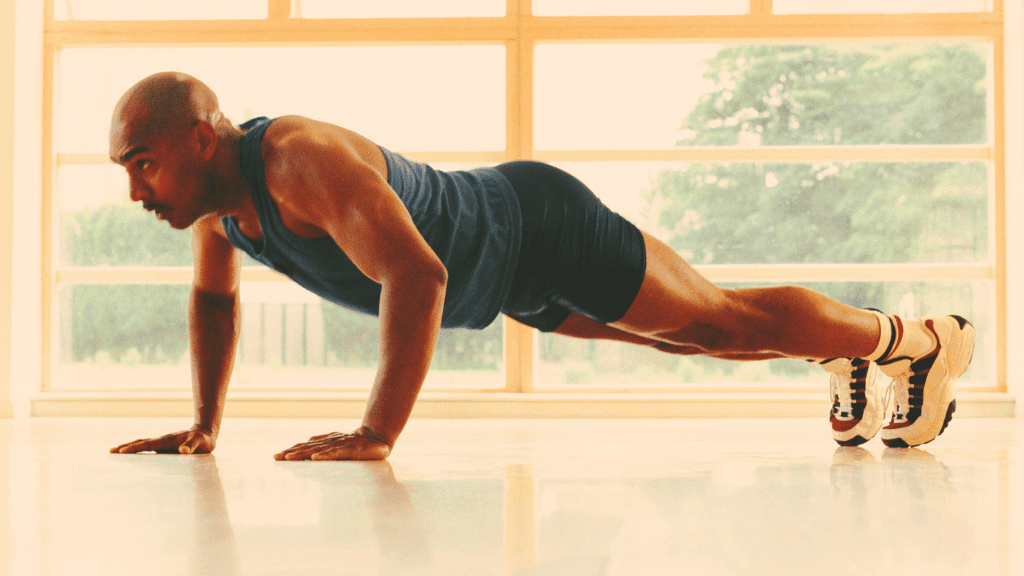
Fitness Level Breakdown
Understanding the breakdown of fitness levels helps categorize where you fit and guides your home workout tips accordingly.
- Beginner: If you’re new to exercise or coming back after a long hiatus, your focus will be on building foundational strength and endurance.
- Intermediate: For those with some exercise experience, you’ll focus on improving endurance and strength while refining technique.
- Advanced: Experienced fitness enthusiasts will engage in more complex exercises, high-intensity workouts, and strength-building routines.
Let’s dive deeper into each fitness level:
Beginner
For beginners, home workout tips should focus on basic movements that build confidence and familiarity with exercise. Endurance and strength are low, so low-impact exercises and manageable reps are ideal. Focus on proper form to avoid injury.
Intermediate
Intermediate fitness levels see improved endurance and moderate strength. Workouts should challenge your body with a mix of cardio and resistance training. The goal is progression—gradually increasing intensity and complexity without overwhelming the body.
Advanced
At an advanced level, home workout tips should push your limits. High intensity, strength-focused movements, and functional exercises should dominate your routine. Flexibility and mobility become equally important for injury prevention and recovery.
Why Understanding Your Level is Important
Knowing your fitness level plays a crucial role in tailoring your workouts to ensure safety, effectiveness, and progress.
- Avoiding Injury: By understanding where you are, you can tailor the intensity and complexity of your workouts, reducing the risk of injury. For example, a beginner shouldn’t perform advanced movements without a proper foundation.
- Ensuring Progress: Gradual progression is key to achieving sustainable results. By working within your current abilities and gradually increasing difficulty, you set yourself up for long-term success.
Creating Your Plan
Once you’ve assessed your fitness level, you can create a personalized home workout tips plan that aligns with your goals.
- Beginner Plan: Focus on basic bodyweight exercises and lower intensity intervals.
- Intermediate Plan: Add strength training and moderate cardio, gradually increasing intensity.
- Advanced Plan: Incorporate high-intensity circuits and advanced strength exercises.
In summary, understanding your fitness level is the foundation for a successful home workout tips plan. It ensures safety, promotes progress, and allows you to challenge yourself effectively while avoiding injury. By tailoring your workouts to your specific abilities, you’re setting yourself up for long-term fitness success.
Setting and Achieving Goals with Home Workout Tips
Setting goals is a vital part of any fitness journey, especially when it comes to creating a successful home workout tips routine. Whether you’re just starting out or looking to take your fitness to the next level, having clearly defined goals helps you stay focused, motivated, and consistent. In this article, we’ll explore how to effectively set goals for your fitness journey and why they are essential for success.
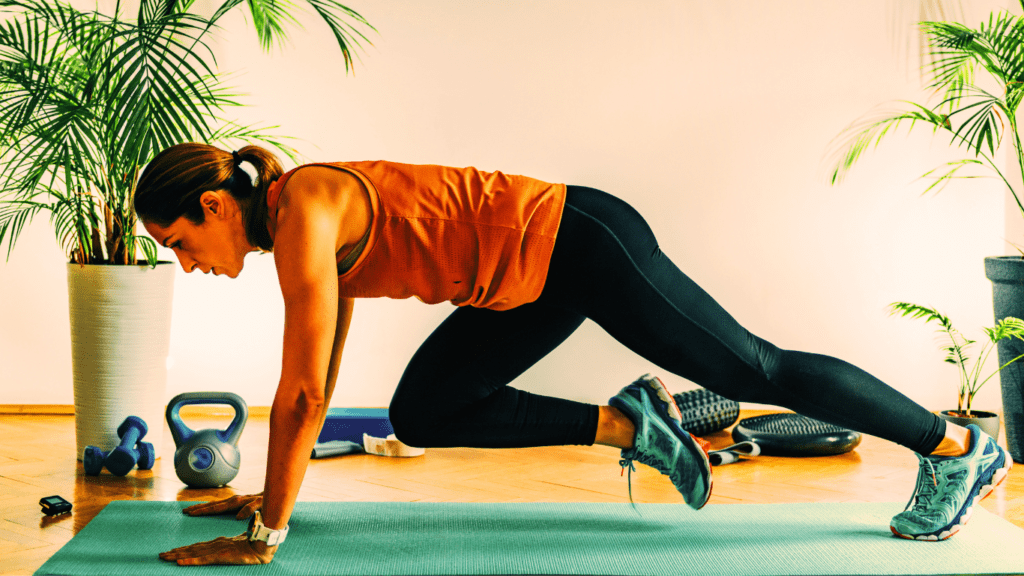
Clarifying Your Fitness Goals
Before you dive into a workout plan, it’s important to understand why you want to exercise in the first place. Everyone has different reasons for wanting to improve their fitness, and knowing your personal motivation can make a significant difference in how you approach your workouts.
- Weight Loss: Many individuals begin their fitness journey with the goal of shedding unwanted pounds. Whether it’s a few pounds or a significant amount, exercise plays a crucial role in creating a calorie deficit while improving overall health.
- Muscle Building: On the other hand, some individuals focus on building strength and muscle mass. Whether it’s gaining a certain amount of muscle or improving overall physical performance, strength training is a key component.
- Improved Flexibility: Others prioritize flexibility and mobility, aiming to prevent injury and enhance their body’s ability to move smoothly through different ranges of motion.
Understanding your specific reasons will help guide your home workout tips so they are tailored to your needs.
Types of Goals
Your fitness journey can benefit from a combination of short-term and long-term goals. Each serves a different purpose, but together, they provide a well-rounded approach to progress.
- Short-term Goals: These are milestones that focus on immediate improvements. For example, you may aim to run a mile without stopping or complete a certain number of push-ups by the end of the week. Short-term goals help you build momentum and create a sense of accomplishment as you move through your workout routine.
- Long-term Goals: These larger milestones take time to achieve. Perhaps your goal is to lose a specific amount of weight, complete a fitness challenge, or improve overall physical fitness over several months. Long-term goals give you something to strive for, providing motivation and structure as you progress.
Both types of goals are important, and setting both ensures a balanced approach to fitness.
SMART Goals
When setting your fitness goals, using the SMART framework can make your home workout tips more effective and achievable. SMART stands for Specific, Measurable, Achievable, Relevant, and Time-bound. Let’s break this down further:
- Specific: This step is about being precise in what you want to achieve. Instead of vague goals like “get stronger,” be clear and specific, such as “increase the number of push-ups from 10 to 20.”
- Measurable: Having measurable goals allows you to track your progress. Whether it’s counting reps, tracking distance, or monitoring time, setting quantifiable benchmarks will help you see how much you’ve improved over time.
- Achievable: Goals should be realistic and fit within your current fitness level. Setting an unattainable goal can lead to frustration, while setting achievable milestones builds confidence and motivation.
- Relevant: Ensure that your goals are aligned with your overall fitness needs. For example, if your primary objective is to improve endurance, focus on exercises that specifically target cardio and stamina.
- Time-bound: Adding deadlines creates a sense of urgency and helps maintain focus. Whether it’s completing a workout challenge in six weeks or reaching a weight loss target by a certain date, having a time frame ensures you stay committed.
Why Setting Goals Matters
Setting goals provides direction and purpose to your fitness journey. Without clear objectives, it’s easy to lose motivation and drift off track. By setting goals that are specific, measurable, and achievable, you create a framework for consistent progress. Additionally, having both short-term and long-term milestones keeps you engaged and motivated throughout the process.
When you integrate these goals into your home workout tips, you’re more likely to stick with your routine, seeing real results over time. Whether you’re a beginner or more experienced, having a structured approach ensures that you’re moving forward while maintaining a healthy balance between intensity and safety.
In conclusion, setting goals is an essential component of a successful fitness journey. With the right combination of short-term and long-term milestones, guided by the SMART framework, you’ll be better equipped to achieve your fitness aspirations through your personalized home workout tips.
Creating a Balanced Routine with Home Workout Tips
Creating a balanced routine is essential for achieving long-term fitness success, especially when following home workout tips. A well-rounded workout plan ensures that you address various aspects of fitness, from cardiovascular health to strength and flexibility. In this article, we’ll explore how to create a balanced workout routine by incorporating key components and understanding their importance.
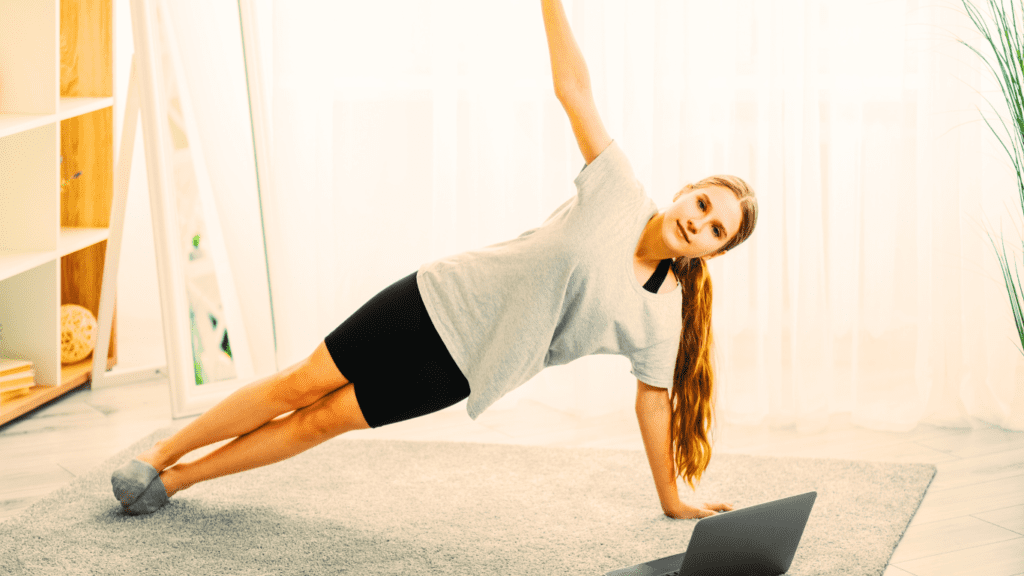
Components of a Balanced Workout
A balanced workout routine consists of three main components: cardiovascular exercises, strength training, and flexibility. Each plays a vital role in overall health and fitness, and combining them ensures a comprehensive approach.
- Cardiovascular Exercises: Activities such as walking, jogging, cycling, or high-intensity interval training (HIIT) are essential for improving cardiovascular health and burning calories.
- Strength Training: Incorporating bodyweight exercises, dumbbells, resistance bands, or machines helps build muscle and boost metabolism.
- Flexibility: Stretching, yoga, and dynamic movement improve mobility and reduce the risk of injury.
Let’s delve deeper into each component and their significance within a balanced home workout tips routine.
Cardiovascular Exercises
Cardiovascular exercises are fundamental to maintaining a healthy heart and improving overall endurance. These exercises get your heart pumping and improve blood circulation, which helps deliver oxygen to your muscles. Common activities include walking, jogging, cycling, and swimming. Additionally, high-intensity interval training (HIIT) has gained popularity for its ability to burn calories and improve cardiovascular performance in a shorter period of time.
Including cardiovascular exercises in your home workout tips boosts heart health, enhances stamina, and aids in fat loss. Whether you prefer long, steady-state activities or short bursts of high intensity, it’s essential to find an approach that works for you and fits into your routine.
Strength Training
Strength training plays a crucial role in developing lean muscle mass, which in turn helps boost metabolism and improve overall strength. This component of a balanced routine is not just for those looking to bulk up—it’s beneficial for everyone. Bodyweight exercises like squats, push-ups, lunges, and resistance band movements can be tailored to suit different fitness levels.
Incorporating strength training into your home workout tips ensures that you build muscles, maintain bone density, and increase overall functional fitness. Strength-focused exercises are particularly important for maintaining independence and reducing the risk of injury as you age.
Flexibility
Flexibility may often be overlooked, but it is equally important for a well-rounded fitness routine. Stretching, yoga, and dynamic movements improve joint mobility, reduce muscle tension, and promote better posture. Increased flexibility allows for greater range of motion during workouts and in daily activities, minimizing the risk of strains and injuries.
Including flexibility exercises in your home workout tips routine will not only enhance your physical performance but also contribute to faster recovery times. Whether you choose static stretches or fluid yoga sequences, flexibility enhances overall well-being.
Importance of Each Component
Each component of a balanced home workout tips routine plays a vital role in achieving a healthy and sustainable fitness lifestyle.
- Cardiovascular Exercises: As mentioned earlier, these improve heart health and aid in calorie burning, making them crucial for weight management and cardiovascular endurance.
- Strength Training: Building muscle helps with metabolism and supports overall functional fitness. Whether you’re lifting weights or performing bodyweight exercises, strength training enhances physical performance in every area of life.
- Flexibility: Flexibility exercises prevent injuries, improve posture, and support a full range of motion during both workouts and everyday tasks.
Creating Your Balanced Routine
When creating a balanced home workout tips routine, aim to incorporate all three components regularly. Start with 2-3 sessions per week and gradually increase the frequency as your fitness level improves. This approach ensures that you’re addressing all aspects of fitness—cardiovascular, strength, and flexibility.
In conclusion, a balanced workout routine is key to maintaining long-term fitness and overall health. By combining cardiovascular exercises, strength training, and flexibility, you ensure that your body remains strong, mobile, and injury-free. Whether you’re a beginner or more advanced, integrating these components into your home workout tips will help you achieve your fitness goals effectively.
Structuring Your Routine with Home Workout Tips
Structuring your routine is an essential part of building a successful fitness plan with home workout tips. Whether you’re just starting out on your fitness journey or looking to take your workouts to the next level, having a well-organized routine ensures that you stay consistent and make steady progress toward your goals. In this article, we’ll explore the differences between full body and split workouts, as well as how to determine the right frequency and volume for your training.
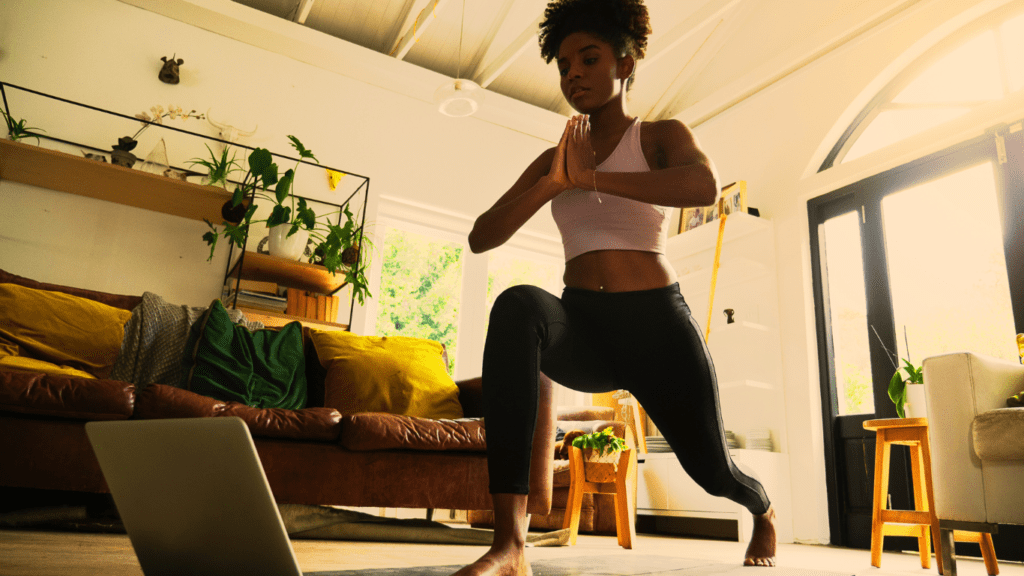
Full Body vs. Split Workouts
When it comes to structuring your routine, you have two main options: full body workouts and split routines. Each has its own advantages, and choosing the right approach depends on your fitness level, time availability, and personal preferences.
- Full Body Workouts: These are perfect for beginners or individuals with a busy schedule. A full-body session targets all major muscle groups in a single workout, allowing you to get a comprehensive session in a shorter period of time. For example, a session might include exercises like squats, push-ups, deadlifts, and rows. By hitting the entire body in one workout, you ensure balanced training and develop foundational strength.
- Split Routines: On the other hand, split routines allow for more specialization, focusing on specific muscle groups on different days. For instance, one day might focus on upper body (e.g., chest, shoulders, arms), while another could target the lower body (e.g., legs and glutes). Split workouts are ideal for those who prefer more variety or who are looking to increase the intensity of specific muscle groups.
Both approaches have their place depending on your goals. Full body workouts are excellent for building general strength, improving muscle balance, and optimizing time. Split routines, however, offer more targeted training for individuals looking to focus on specific areas or develop strength in certain muscle groups.
Frequency & Volume
The frequency and volume of your workouts significantly impact your progress. Beginners, intermediate trainees, and advanced fitness enthusiasts each require a different approach to ensure they’re getting the most out of their training.
- Beginners: If you’re just starting out or easing back into a fitness routine, a balanced approach of 2-3 days per week is ideal. Focus on mastering major movement patterns like squats, deadlifts, and push exercises. This ensures proper technique and allows you to build a solid foundation before increasing intensity or volume. Starting slow helps prevent injury and provides a solid base for future progress.
- Intermediate/Advanced: Those with more experience can handle a higher frequency of workouts, ranging from 4-5 days per week. As you become more advanced, it’s important to incorporate variety and progressively increase intensity. This could include using heavier weights, adding more challenging variations of exercises, or focusing on more complex compound movements. For advanced lifters, ensuring a balance between volume, intensity, and recovery is key to long-term success.
The Importance of Progressive Overload
Regardless of your fitness level, progressive overload should be a central focus of your routine. This means gradually increasing the demand placed on your body over time. Whether it’s adding more weight to a lift, increasing the number of repetitions, or shortening rest periods, consistently challenging your muscles ensures continued progress. Without this principle, progress will plateau, leaving you feeling stuck in your fitness journey.
Structuring Your Routine
When creating a structured routine with home workout tips, consider combining the three key components: strength training, cardiovascular exercise, and flexibility. Here’s an example of how you can combine these elements to create a balanced workout week:
- Monday: Upper Body Strength – Bench Press, Rows, Shoulder Press
- Wednesday: Lower Body Strength – Squats, Deadlifts, Lunges
- Friday: Full Body Circuit – Bodyweight movements or circuit-based exercises
- Sunday: Cardio & Core Focus – HIIT, Running, or Core Stability Work
This approach ensures that you’re hitting all the major muscle groups and keeping your workouts varied and engaging.
In conclusion, structuring your routine with home workout tips is essential for maintaining consistency and ensuring steady progress. Whether you opt for a full-body approach or prefer a more targeted split routine, combining frequency, volume, and progressive overload is key to achieving your fitness goals effectively. By following a well-structured routine, you’ll be better equipped to reach your personal fitness milestones while staying injury-free.
Comparison of Home Workout Exercises (Types) Chart
| Type of Workout | Equipment Needed | Benefits | Difficulty Level | Recommended Frequency |
|---|---|---|---|---|
| Bodyweight Exercises | None | – Cost-effective | Easy | 3-5 times per week |
| – Versatile | ||||
| – Targets multiple muscle groups | ||||
| – Adjustable to fitness level | ||||
| High-Intensity | Minimal (e.g., | – Efficient calorie burning | Moderate | 2-3 times per week |
| Interval Training | dumbbells, | – Boosts metabolism | ||
| (HIIT) | resistance bands) | – Time-saving | ||
| Yoga and Pilates | Yoga mat | – Improves flexibility and core strength | Easy | 2-3 times per week |
| – Enhances posture and balance | ||||
| – Relieves stress | ||||
| Online Workouts | None | – Convenience | Easy to Moderate | 3-5 times per week |
| and Virtual Classes | – Variety of options | |||
| – Flexible scheduling | ||||
| – Access to expert guidance and community support |
Adjusting Your Plan with Home Workout Tips
Adjusting your plan is an essential part of maintaining progress and staying motivated with home workout tips. Whether you’re just starting or are more advanced in your fitness journey, knowing how to modify your routine helps you avoid plateaus and achieve consistent results. In this section, we’ll dive deeper into key strategies for adjusting your plan, including progressive overload, tracking progress, and listening to your body.
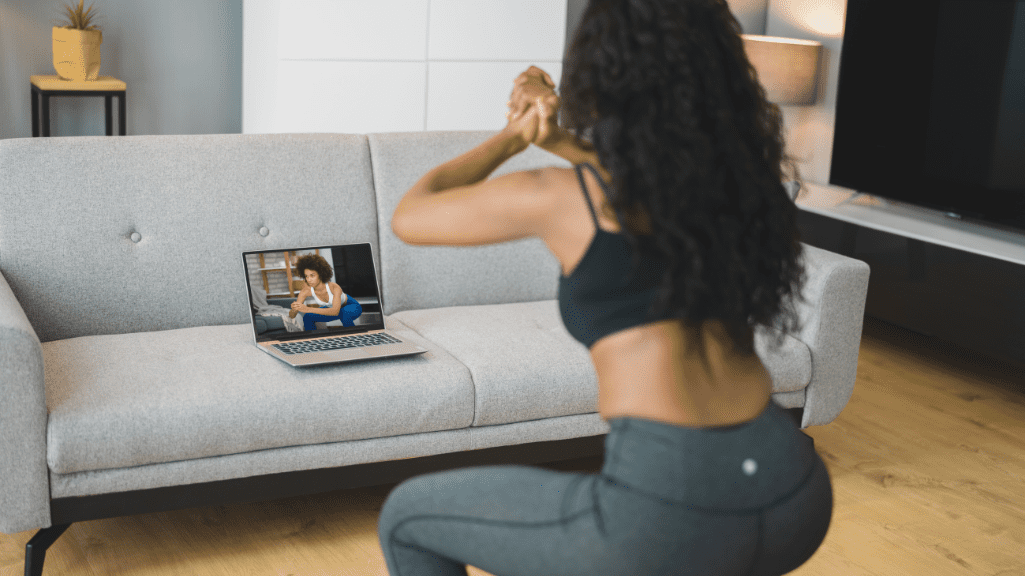
Progressive Overload
Progressive overload is a fundamental concept for improving strength, endurance, and overall fitness. Simply put, it involves gradually increasing the intensity of your workouts to continue making gains. Without this principle, your body adapts to the current workload, and progress can stall.
- Increasing Weight: One of the most effective ways to implement progressive overload is by adding more weight to your exercises. For example, if you’ve been lifting a set amount of weight for a certain number of reps, slowly increasing that weight will challenge your muscles to grow stronger.
- Increasing Repetitions: Another approach is to increase the number of repetitions in each set. If you’re able to complete 10 push-ups easily, aim for 12 or 15 reps to push your muscles further.
- Altering Intensity: You can also adjust the intensity by shortening rest periods between sets or adding more challenging variations of exercises (e.g., adding resistance bands or doing decline push-ups instead of standard push-ups).
By consistently incorporating progressive overload, you ensure that your body is continually adapting and improving.
Tracking Progress
Tracking your progress is crucial for knowing when and how to adjust your workouts. Regularly monitoring key fitness metrics allows you to make well-informed decisions about how to move forward with your training.
- Strength Milestones: Keep a record of how much weight you’re lifting or the number of sets and reps completed. For instance, if you’re aiming to increase your bench press, tracking small improvements over time can motivate you to keep pushing forward.
- Endurance Progress: Endurance can be measured through performance in activities like running, cycling, or circuit workouts. If you notice that you can complete a set number of reps or miles with ease, it may be time to up the intensity or duration.
- Fitness Goals: Regularly assess your overall fitness goals and adjust your workouts to match those objectives. Whether it’s building muscle, losing weight, or enhancing flexibility, knowing where you stand allows you to create a more targeted plan.
Listening to Your Body
Listening to your body is perhaps one of the most overlooked aspects of adjusting your plan. Rest and recovery play a crucial role in preventing injury and ensuring long-term progress. Without proper recovery, overtraining can lead to burnout and setbacks.
- Rest Days: Incorporating at least 1-2 rest days per week is essential. These days allow your muscles to repair and strengthen, which is necessary for future performance. Rest doesn’t mean complete inactivity; active recovery—such as stretching, light walking, or gentle yoga—is highly beneficial.
- Identifying Signs of Overtraining: Watch for signs like persistent fatigue, decreased performance, or aches that don’t improve with typical recovery methods. Listening to these signals will guide you in adjusting your workout intensity or frequency.
- Balanced Training: Your routine should strike a balance between hard work and rest. Avoid pushing through fatigue and ensure that your body has time to adapt to the increasing demands placed on it.
Home Workout Tips: Adjusting Workouts Based on Feedback
As you continue your fitness journey, adjusting your plan based on feedback is essential for maintaining progress. Whether it’s modifying exercises, adding sets, or adjusting intensity, your workouts should evolve to challenge your body in new ways.
- Feedback from Form: Pay close attention to how your body moves during exercises. Poor form can be a sign that you’re pushing too hard, or need to modify the exercise to avoid injury.
- Variety in Exercises: Over time, adding variety to your workouts can prevent monotony and ensure balanced development across all muscle groups. If you’ve been doing the same routine for weeks, mix it up with new movements or intensity techniques.
In conclusion, adjusting your plan is crucial for maintaining consistent progress in your fitness journey. By incorporating progressive overload, tracking your progress, and listening to your body, you’ll ensure that your workouts remain effective, sustainable, and enjoyable.
Home Workout Tips: Final Thoughts
In this final section, we’ll summarize the key points covered throughout the article and explain why they have been essential in creating a well-rounded home workout tips guide. Whether you’re a beginner or more experienced in fitness, each aspect of the plan plays a crucial role in helping you achieve your fitness goals. Additionally, we’ll highlight the flexibility of home workouts to evolve with your fitness progress, while emphasizing the importance of staying motivated and enjoying the journey of self-improvement.
Home Workout Tips: Summary of Key Points
Here are the main takeaways from the article:
- The importance of creating a personalized home workout plan tailored to individual fitness levels.
- Flexibility to suit different fitness levels (beginner, intermediate, advanced) with carefully crafted routines.
- Benefits of home workouts such as convenience, cost-effectiveness, and adaptability to changing needs.
- Understanding your fitness level to avoid injury and ensure gradual progression.
- Setting goals that are Specific, Measurable, Achievable, Relevant, and Time-bound (SMART goals).
- Structuring your routine with a balance between full-body and split workouts, while considering frequency and volume.
- Adjusting your plan through progressive overload, tracking progress, and incorporating rest for optimal recovery.
Each of these elements plays a vital role in creating a comprehensive and sustainable fitness journey.
Home Workout Tips: Flexibility of Home Workouts
One of the most significant benefits of home workout tips is their inherent flexibility. Unlike traditional gym settings, where you are often bound by equipment and time constraints, home workouts allow you to tailor your sessions to fit your personal needs and lifestyle. Whether you’re short on time, traveling, or recovering from an injury, home workout tips can easily adjust to accommodate these changes. As your fitness improves, you can gradually evolve your routines by adding more challenging exercises, increasing intensity, or switching up movements to keep things fresh and engaging.
This flexibility ensures that you never feel limited or stuck, providing a seamless way to continue progressing at your own pace. Whether it’s integrating high-intensity interval training (HIIT), incorporating strength training, or focusing on recovery, home workout tips empower you to create a dynamic, adaptable plan that evolves with your fitness goals.
Home Workout Tips: Motivation and Enjoyment
Another crucial element that cannot be overlooked is motivation. Staying consistent with your workouts can be challenging, especially when progress slows down or life gets busy. However, maintaining a positive mindset and enjoying the journey is essential for long-term success. Home workout tips provide a personalized experience that is empowering and rewarding. You’re in control of your own progress, which encourages a sense of accomplishment and ownership over your fitness journey.
By setting clear goals, tracking your achievements, and adjusting your plan as needed, you create a sense of direction that keeps motivation high. Whether it’s pushing through a challenging session or seeing improvements in strength and endurance, every milestone contributes to a rewarding experience.
In conclusion, home workout tips serve as a versatile, convenient, and sustainable approach to fitness. From personalized plans and understanding fitness levels to structured routines and continuous adjustments, each component contributes to a well-rounded strategy. Emphasizing flexibility allows you to stay adaptable, while motivation fuels your passion for self-improvement. With the right guidance, home workout tips pave the way for a healthier, stronger you.
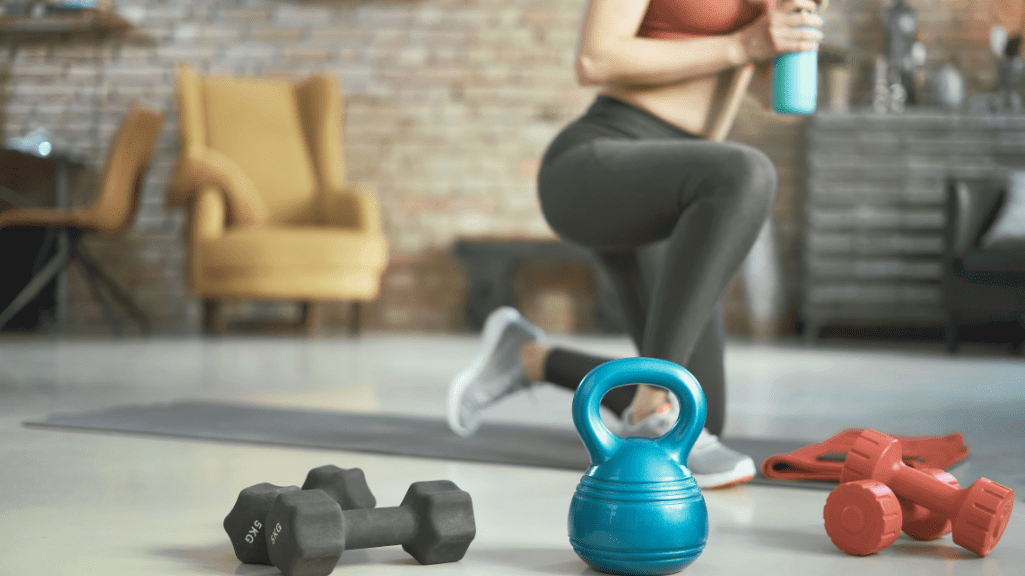
FAQ: Home Workout Tips
1. What are the key benefits of following home workout tips?
Home workout tips provide flexibility, convenience, and cost-effectiveness. They eliminate the need for a gym membership and allow you to exercise on your own schedule. These tips also help you make the most of your space and resources, enabling you to achieve your fitness goals without leaving home.
2. How can I create a workout-friendly space at home?
To make your space workout-friendly, clear any clutter to ensure safety and movement freedom. Use a yoga mat or a non-slip surface, and keep essential equipment like resistance bands or dumbbells within reach. A tidy and designated workout area boosts motivation and reduces distractions.
3. Do I need special equipment for effective home workouts?
Not at all! Home workout tips often emphasize the power of bodyweight exercises like push-ups, squats, and planks. If you prefer variety, basic tools like resistance bands, dumbbells, or even household items like water bottles can be used creatively to add intensity.
4. How can I stay motivated to work out at home?
Consistency and motivation stem from setting clear goals and creating routines. Incorporate home workout tips such as using energizing music, setting small challenges, and celebrating milestones. Variety in exercises can also keep workouts fresh and exciting.
5. What types of exercises are best for home workouts?
Bodyweight exercises, High-Intensity Interval Training (HIIT), yoga, and Pilates are among the best options. These workouts require little to no equipment and target multiple muscle groups, offering a balanced approach to strength, flexibility, and cardio fitness.
6. How do I prevent boredom during home workouts?
Mixing up your routine is essential. Explore different exercises like cardio, strength training, and flexibility-focused sessions. Home workout tips also recommend trying online classes or creating a personalized playlist to keep the energy and excitement alive.
7. How important is nutrition and hydration for home workouts?
Very important! Proper nutrition fuels your body, while hydration ensures optimal performance. Following home workout tips like drinking water before, during, and after exercise and maintaining a balanced diet supports recovery and enhances workout efficiency.
8. Can I achieve the same results at home as in a gym?
Absolutely! Home workout tips highlight the importance of dedication and consistency over the location. With structured routines, bodyweight exercises, and effective use of time, you can build muscle, lose weight, and improve overall fitness right at home.
9. How do I balance exercise with rest and recovery?
Rest and recovery are essential for progress. Incorporate rest days into your schedule and practice active recovery, such as light stretching or yoga. Home workout tips also recommend listening to your body to avoid burnout and ensure long-term sustainability.
10. Are online resources helpful for home workouts?
Yes, immensely! Online workout videos, virtual fitness classes, and fitness apps are valuable tools. They offer guided routines, challenges, and expert advice tailored to your needs. Leveraging these resources can make home workouts engaging and effective.
By applying these home workout tips, you can create a fitness routine that’s not only effective but also sustainable and enjoyable. Remember, the key is to stay committed, adapt to your space, and keep pushing toward your goals!
Get out there and get fit – one home workout at a time. You’ve got this!


